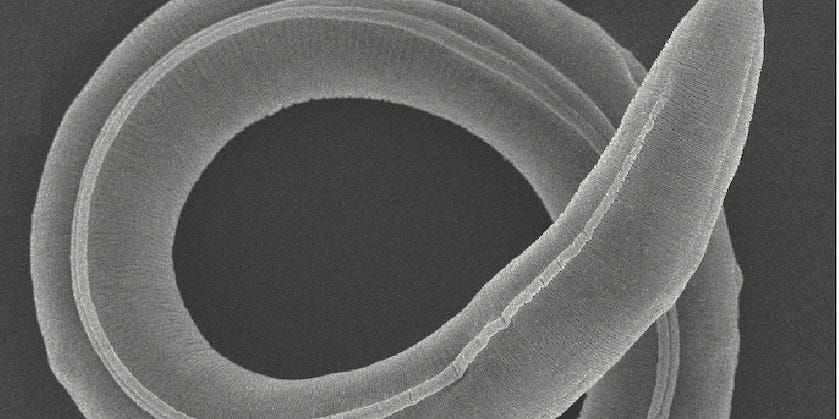46,000-Year-Old Worm Found in Siberian Permafrost Brought Back to Life
Scientists revived a 46,000-year-old worm that was living in Siberian permafrost.
When they brought it back to life, the worm started having babies.
Small worms like this are known to have the ability to shut down biological functions to survive.
Get the inside scoop on today’s biggest stories in business, from Wall Street to Silicon Valley — delivered daily. Loading Something is loading. Thanks for signing up! Access your favorite topics in a personalized feed while you're on the go. download the app Email address By clicking ‘Sign up’, you agree to receive marketing emails from Insider as well as other partner offers and accept our Terms of Service and Privacy Policy
Scientists discovered a female microscopic roundworm that has been stuck deep in Siberian permafrost for 46,000 years, the Washington Post reported. When they revived it, the worm started having babies via a process called parthenogenesis, which doesn't require a mate.
According to a press release, the worm spent thousands of years in a type of dormancy called cryptobiosis. In that state, which can last almost indefinitely, all metabolic processes pause, including "reproduction, development, and repair," per the University of Hawaiʻi at Mānoa.
In a study published Thursday in the journal PLOS Genetics, scientists reported that after sequencing the worm's genome, scientists said it belonged to an "undescribed species."
Previously, Plectus murrayi and Tylenchus polyhypnus nematodes were resurrected from moss and herbarium specimens after a few dozen years, according to Live Science. This new species, however, called Panagrolaimus kolymaensis, was dormant for tens of thousands of years longer.
Deep sea biologist Holly Bik estimates there are millions of nematode species living in environments as diverse as ocean trenches, tundras, deserts, and volcanic soils. Scientists have only described 5,000 marine species so far.
William Crow, a nematologist at the University of Florida who was not involved in the study, told the Post that this worm could belong to a species that has gone extinct in the last nearly 50,000 years.
"However, it very well could be a commonly occurring nematode that no one got around to describing yet," Crow said.
The fact that the worm survived all of those years is not a shock to scientists, who have known for years that microscopic organisms, like the worm studied here, can stop their biological functions to survive even the harshest conditions, according to the press release.
"Altogether, our findings demonstrate that nematodes evolved mechanisms potentially allowing them to suspend life over geological time scales," the PLOS Genetics paper said.
Source: Business Insider


